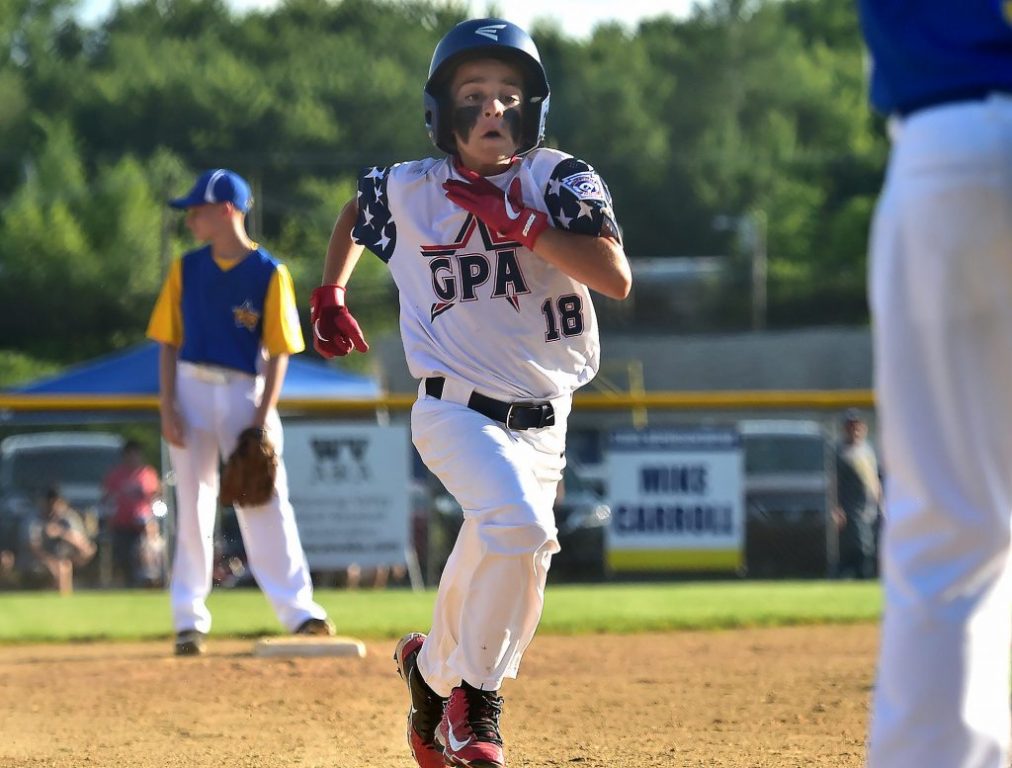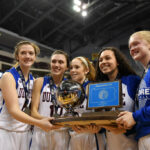There will be baseball again.
There will be memories that will last a lifetime, even in a time we’d just as soon forget.
Last week, Gov. Tom Wolf and the Pennsylvania Department of Education released preliminary mandates governing the return to play of sports from the professional to the amateur levels, paving the way for one of the area’s most popular youth sports traditions, Little League Baseball.
Little League International announced in March a temporary suspension of league activities nationwide until May 11, and as Lackawanna County inches toward a potential move to the green phase, many leagues around District 17 and 32 have announced plans to return at some point during the summer. District 16 and 31 administrator Bob Bertoni notified league presidents on Tuesday that teams can begin practicing on Friday, the day Luzerne County enters the green phase of Wolf’s reopening plan.
But how those leagues will look once they do return, and how they will operate on a day-to-day basis, will largely be in their own hands to a greater degree than ever before.
“It’s very important that our local leagues follow their state and local municipality protocols and guidelines in returning to play,” said Corey Wright, the East Region Director of Little League Baseball. “I know everybody is anxious, especially in Pennsylvania with, red, yellow and green (phases). The governor said in Pennsylvania that youth and recreational programs can begin in green with some restrictions, and we want local leagues, obviously, to adhere to that.”
The state parameters for a return to play require several steps be taken before leagues can begin, including leagues educating players and family members on symptoms of COVID-19 and when to stay home, in addition to forming a plan of action should a participant come down with the disease during the season. It also requires coaches and umpires to wear masks at all times, and for all participants to maintain proper social distancing measures, including in the dugouts.
Spitting and bubble gum blowing are also at least a temporary thing of the past, as are celebratory fist bumps and the postgame handshake line. Players are required to bring their own water bottles to games. All venues are limited to 250 fans, and facilities must not exceed 50 percent occupancy permitted by law. Essential personnel such as players and coaches will be counted as part of the 250.
Little League went a few steps further when it released its Best Practices Guide for leagues returning to play. Wright affirmed the polices were more suggestions than rules, but he stressed they were suggestions Little League International would prefer local leagues follow for the 2020 season. In it, Little League requests players use only their own equipment, and that leagues consider shutting down concession stands — traditionally a top source of both congregating and fundraising for leagues around the nation — in order to best maintain social distancing guidelines.
Bertoni, the District 16 and 31 administrator, clearly stated in his email to presidents that all guidelines handed down by the governor and the CDC must be followed. Teams can begin practice Friday and are allowed to practice for two weeks before any games can begin.
The onus to follow all guidelines falls on the individual leagues.
“I don’t blame Little League from backing away a bit,” said Steve Skammer, the president of Back Mountain Little League. “Every state has so many rules, there is now way Little League could govern every state the same. They are just saying be smart and follow your local rules. We have been given enough time to practice. We need to follow the rules, not only set by the leagues, but the CDC as well. We just need to follow them.”
Skammer said the Back Mountain Little League has been working on a return to play plan.
“We have talked about taking temperatures and having hand sanitizer,” Skammer said. “We have a lot of things to do in the next two weeks. But things could change.”
Skammer and Plains Little League president Nino Cinti see only playing the upper levels as being feasible this year. That means it’s most likely there will only be minor and major leagues. Both agree it would be difficult for players in T-ball and coach-pitch to maintain proper social distancing.
“Considering everything that is going on and seeing how everything is progressing, I think this is a good time to do it,” Cinti said. “We are going to get together with our board and coaches in the league and talk about things.”
A different look
As leagues prepare to put together plans for their return, there will likely be very different experiences than usual being offered at leagues around the area.
West Scranton Little League will adhere to Little League’s request and not open the concession stand, league president Tom Selemba said in an email. In an email to league members earlier in the week, Carbondale Little League announced it would not have a tee-ball league this year, because of the difficulty of maintaining social distance between the league’s youngest players and the coaches who typically stay on the field to guide them.
Some leagues already have plans in place to block off the bleachers near team dugouts and reserve them solely for players only. Also, adjustments to the concession stands and the type of items to be offered may change.
Some other changes fans may see include umpires working from behind the pitcher’s mound, each team using their own balls and players bringing their own bats and helmets to avoid sharing equipment.
“Parents and coaches may be asked to umpire,” Cinti said. “The more that can be kept in-house the easier it will be. All our coaches will be made aware of what needs to be done.”
Some leagues, like Carbino Club, Green Ridge, West Scranton and Abington, plan to be ready once Lackawanna County goes green. But Old Forge Little League and Dunmore Little League both set more concrete time frames, according to their websites. Old Forge plans to begin practices July 18, targeting an Aug. 10 opening day. Dunmore is hoping to kick off a mandatory two-week practice phase July 1 before starting games.
Many leagues are facing a harsh reality, though. Some who signed children up to play before the pandemic gripped the nation no longer feel comfortable allowing them to do so. Plus, starting leagues in the throes of summer puts Little League in direct competition with other activities that traditionally begin at this time of year, leading to the possibility that participation numbers could be down countywide.
“Our league has roughly 475 kids, and I’d say about 90 percent are still signed up and want to play,” said Jody Fanning, president of the Abington Little League. “We’ve had some withdrawals, which is understandable with concerns about the virus, and some play other sports. So we’re competing with things like football and lacrosse.”
Wright said District 17 and 32 leagues will at least have the advantage of not being among the first to return to play. In the East Region, some programs in Maryland, Rhode Island and even Pennsylvania have returned to play, and while leagues have reported several issues — especially when it comes to teaching players to maintain social distancing norms and expecting parents to do the same as they look on — several other areas have gone a bit more smoothly than planned. Players have generally brought their own equipment and water bottles, he said, and concession stands that haven’t opened have not drawn many problems.
“The question we’re getting a lot of is, ‘Are we covered if something happens regarding COVID?’” Wright said. “Right now, there’s obviously no insurance that covers the virus, because it’s brand new. … I know people get anxious when they’re returning to play. But we want them to just do their best to follow all their state and local guidelines. Then with our (guidelines), the document is very inclusive, very well put together. It’s very informative and educated and, at times, it can be daunting for volunteers. But if they can, they could be successful in reopening.”
While the season may not have the same feel, both presidents agree it will be good to get the players out on the field playing some baseball and softball. The season will be considered the 2020 season, and fall ball is not expected to be offered this year.
Skammer said he will monitor the situation and make adjustments and changes as he sees necessary.
“It’s time to play,” Skammer said. “I think people are smart and will be smart about it. We will monitor it. If there are people not being smart we can shut it down. Especially with the spectators. Lots of leagues are closing their bleachers. If anybody wants to watch, they can watch from the car or the outfield.”




